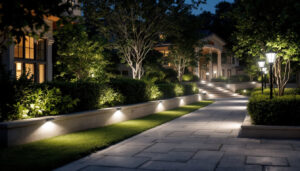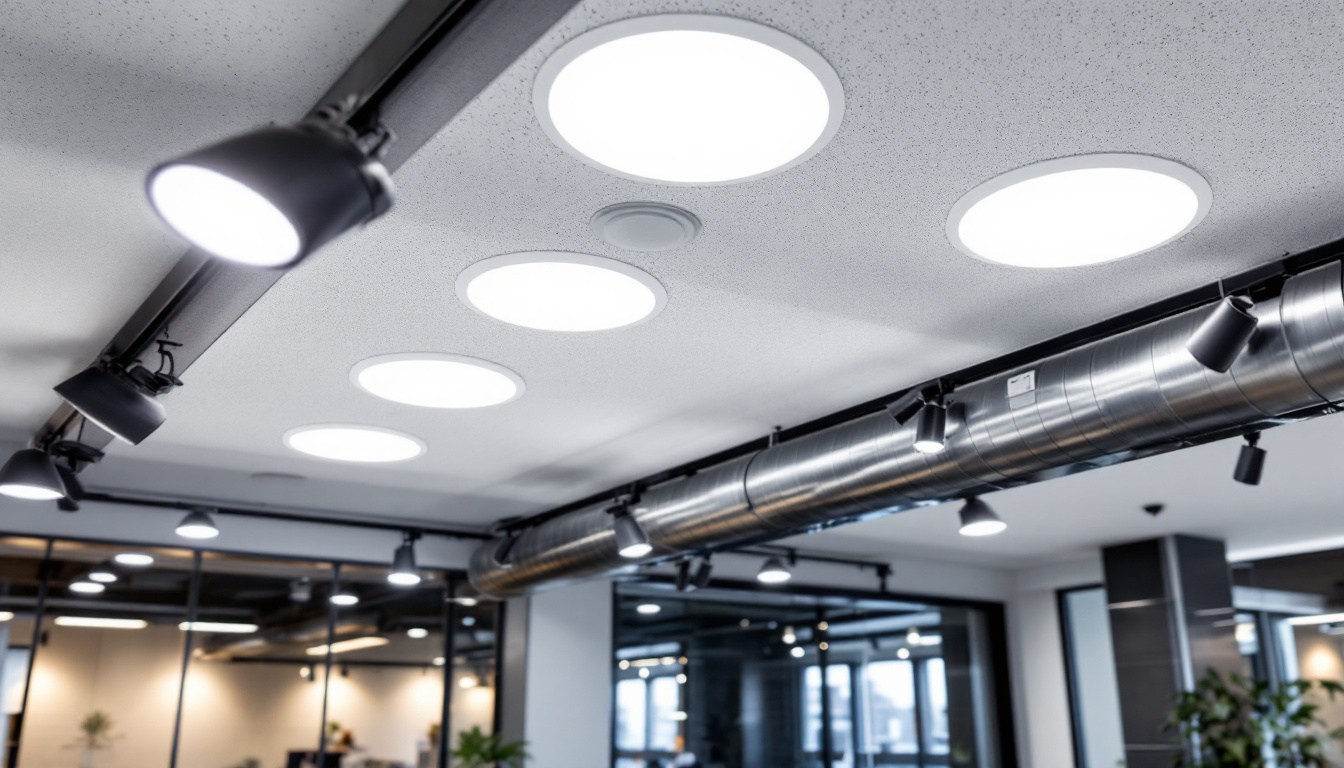

In the world of electrical installations and lighting design, the importance of understanding the various components that contribute to a successful project cannot be overstated. Among these components, fan cyclones play a crucial role in ensuring that the lighting systems operate efficiently and effectively. This article delves into essential facts about fan cyclones that every lighting contractor should know, from their design and functionality to installation tips and maintenance considerations.
Fan cyclones are specialized devices that enhance air circulation and cooling in various environments, particularly in spaces where lighting systems generate heat. They are often integrated into larger lighting installations to improve energy efficiency and maintain optimal operating conditions.
A fan cyclone is a type of air circulation device that uses centrifugal force to move air effectively. Unlike traditional fans, which rely on blades to push air, fan cyclones utilize a unique design that allows for greater airflow with less energy consumption. This makes them an ideal choice for lighting contractors looking to optimize their projects.
The design of a fan cyclone typically includes an inlet, a rotor, and an outlet. Air enters through the inlet, is accelerated by the rotor, and is expelled through the outlet, creating a powerful airflow. This mechanism not only cools the lighting fixtures but also helps to distribute light more evenly throughout the space. The efficiency of this design means that fan cyclones can often operate quietly, making them suitable for environments where noise reduction is crucial, such as in theaters or conference rooms.
Incorporating fan cyclones into lighting projects offers several advantages. First and foremost, they enhance energy efficiency by reducing the need for additional cooling systems. This can lead to significant cost savings over time, particularly in commercial settings where lighting systems are in constant use.
Moreover, fan cyclones can prolong the lifespan of lighting fixtures. By keeping the operating temperature lower, they prevent overheating, which is a common cause of premature failure in lighting systems. This not only reduces replacement costs but also minimizes downtime, ensuring that projects remain on schedule. Additionally, the improved airflow can contribute to a more comfortable environment for occupants, as it helps to maintain a stable temperature and reduce hot spots that can lead to discomfort.
Another noteworthy benefit of fan cyclones is their versatility. They can be used in a wide range of applications, from industrial warehouses to retail spaces, adapting to different lighting setups and environmental conditions. This adaptability makes them a valuable asset in both new installations and retrofitting projects. Furthermore, as sustainability becomes increasingly important in design and construction, fan cyclones align well with green building practices by reducing energy consumption and enhancing overall system performance.
When integrating fan cyclones into lighting installations, there are several key considerations that lighting contractors must keep in mind. These factors can significantly influence the effectiveness of the system and the overall success of the project.
Proper sizing and placement of fan cyclones are critical to achieving optimal performance. Contractors should assess the specific requirements of the space, including its dimensions, the type of lighting fixtures used, and the overall layout. A fan cyclone that is too small may not provide adequate airflow, while one that is too large can create unnecessary noise and energy consumption.
Placement is equally important. Ideally, fan cyclones should be positioned to maximize airflow across all lighting fixtures. This may involve strategic placement near heat-generating fixtures or in areas where air circulation is typically poor. Conducting airflow simulations can help determine the best locations for installation. Additionally, contractors should consider the aesthetic aspects of placement; fan cyclones should blend seamlessly into the overall design of the space, ensuring that functionality does not compromise visual appeal.
Another essential consideration is the compatibility of fan cyclones with various lighting systems. Not all fan cyclones are designed to work with every type of fixture. For instance, LED lights generate less heat compared to traditional incandescent bulbs, which may influence the type of fan cyclone needed.
Contractors should also consider the control systems used in conjunction with fan cyclones. Many modern lighting systems include smart technology that allows for automated control of both lighting and airflow. Ensuring compatibility with these systems can enhance the overall efficiency of the installation. Furthermore, integrating fan cyclones with advanced lighting controls can facilitate energy savings by adjusting airflow based on real-time occupancy and temperature data, creating a more responsive and sustainable environment.
Moreover, contractors should pay attention to the maintenance requirements of both the lighting and fan cyclone systems. Regular inspections and cleaning schedules can prevent dust accumulation and ensure optimal performance. Understanding the lifecycle of each component can also aid in planning for future upgrades or replacements, ensuring that the system remains efficient and effective over time.
Installing fan cyclones requires careful planning and execution. Following best practices can ensure that the installation is successful and that the system operates as intended.
As with any electrical installation, safety is paramount. Contractors must adhere to local electrical codes and regulations when installing fan cyclones. This includes ensuring that all wiring is properly insulated and that circuits are appropriately rated for the load.
Additionally, contractors should consider the power source for the fan cyclones. Many units require a dedicated circuit to operate efficiently, especially in larger installations. Properly assessing the electrical load and ensuring that the circuit can handle the additional demand is crucial.
Once the installation is complete, thorough testing and commissioning are essential steps. This process involves verifying that the fan cyclones are functioning correctly and that airflow is being distributed as intended. Contractors should conduct airflow measurements and make any necessary adjustments to optimize performance.
Moreover, commissioning provides an opportunity to educate clients on the operation and maintenance of the fan cyclones. Providing clear instructions on how to adjust settings or troubleshoot common issues can enhance client satisfaction and reduce the likelihood of service calls.
Regular maintenance is vital to ensure the longevity and efficiency of fan cyclones. Lighting contractors should educate clients on the importance of routine checks and provide guidelines for maintaining these systems.
Conducting routine inspections is essential for identifying potential issues before they escalate. Contractors should recommend that clients check for any signs of wear or damage, such as unusual noises or decreased airflow. Regularly cleaning the fan cyclone and its components can also prevent dust buildup, which can hinder performance.
During inspections, it is important to verify that all electrical connections are secure and that there are no signs of overheating. Addressing these issues promptly can prevent costly repairs and ensure that the system continues to operate efficiently.
Many fan cyclones come equipped with filters designed to trap dust and debris. Over time, these filters can become clogged, reducing airflow and efficiency. Contractors should advise clients on the appropriate schedule for filter replacement and cleaning, which may vary depending on the environment in which the fan cyclone operates.
In commercial settings, where dust and contaminants are more prevalent, more frequent maintenance may be necessary. Providing clients with a maintenance checklist can help them stay on top of these tasks and ensure optimal performance.
The field of fan cyclone technology is constantly evolving, with new innovations emerging that can further enhance their performance and efficiency. Lighting contractors should stay informed about these advancements to offer the best solutions to their clients.
One of the most significant trends in fan cyclone technology is the integration of smart technology. Many modern fan cyclones now come equipped with sensors that can monitor temperature and humidity levels in real-time. This data can be used to adjust airflow automatically, optimizing energy consumption and maintaining comfortable conditions.
Smart fan cyclones can also be integrated into building management systems, allowing for centralized control of lighting and airflow. This not only enhances convenience but also provides valuable insights into energy usage, enabling clients to make informed decisions about their systems.
As energy efficiency becomes increasingly important, manufacturers are developing fan cyclones that meet or exceed stringent energy efficiency standards. These advancements often include improved motor technology and aerodynamic designs that enhance performance while reducing energy consumption.
Lighting contractors should be aware of these standards and consider them when selecting fan cyclones for their projects. Choosing energy-efficient models can not only benefit clients financially but also contribute to sustainability goals.
Fan cyclones are an essential component of modern lighting installations, offering numerous benefits that enhance efficiency and performance. By understanding their design, functionality, and maintenance requirements, lighting contractors can provide valuable insights and solutions to their clients.
From proper sizing and placement to the integration of smart technology, the knowledge of fan cyclones equips contractors with the tools needed to deliver successful projects. Staying informed about innovations in the field will further enhance their ability to meet client needs and adapt to changing industry standards.
Ultimately, the effective use of fan cyclones can lead to improved energy efficiency, prolonged equipment lifespan, and greater client satisfaction, making them a vital consideration for any lighting contractor.
Ready to enhance your lighting installations with the efficiency and performance of fan cyclones? Look no further than LumenWholesale for all your lighting needs. We provide contractors with high-quality, spec-grade lighting products, including state-of-the-art fan cyclones, at unbeatable wholesale prices. With our direct-to-contractor approach, you’ll enjoy superior products without the inflated markups of local distributors. Our extensive selection not only meets but exceeds industry standards, ensuring reliable and high-performance lighting for every project. Plus, with free shipping on bulk orders, you can stock up on premium lighting solutions at the best value — without hidden fees or compromises. Elevate your projects and delight your clients by choosing LumenWholesale, where quality, affordability, and convenience converge. Wholesale Lighting at the Best Value is just a click away.

Discover the essential guide to electric outlets tailored for lighting contractors.

Discover how recessed light fixtures for suspended ceilings can enhance your business as a lighting contractor.

Discover the essential differences between ballasts and drivers in lighting systems.

Discover the transformative power of RGB lights in modern design with insights tailored for lighting contractors.
Get notified when NEW deals are released.
Optimize your budget with wholesale discounts.
Only top-quality, specification-grade lighting products.
No additional costs at checkout - what you see is what you pay.
We understand the unique needs of contractors.